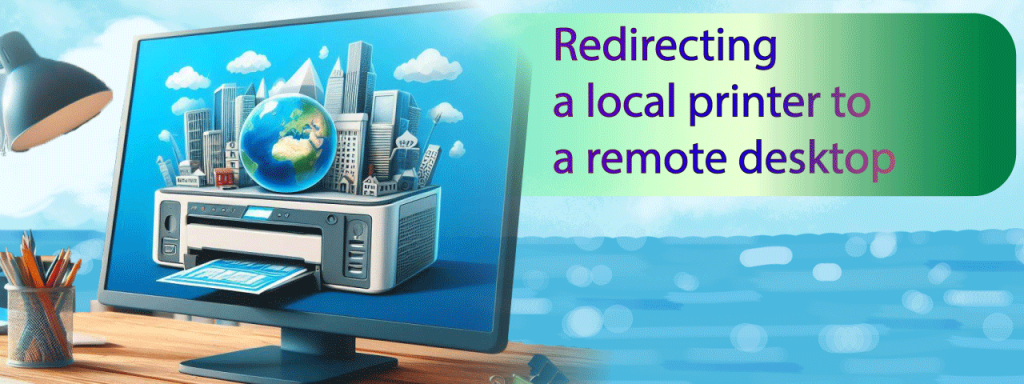Redirecting a local printer to a remote desktop
Efficiency is essential in the fast-paced world of business. It’s particularly true in print management, where efficient printing procedures greatly influence output. One technique gaining traction is RDP printer redirection. With its robust print job capabilities, the HighFigure program connects to remote desktop computers with ease.
Understanding Printer Redirection
It’s possible to automatically reroute print jobs from one printer to another via RDP printer redirection. It can be very helpful when a printer isn’t working properly or when the print job is too big for a regular printer to manage. HighFigure software may help — it automatically redirects print jobs to a big central printer if they surpass a predetermined page count. Using a larger-volume printer not only increases throughput but also lowers costs.
RDP printer redirection is significant because it can improve printing operations’ efficiency. If you use print job prioritization strategies, you may mitigate needless hold-ups. Moreover, you’ll guarantee seamless printing operations. Redirecting local printers might also result in financial savings.
Preparing for Printer Redirection
So, how can you make sure that the transfer from your lRDP local printer to a remote desktop environment goes well? Let’s look at what you can do about it:
Make sure that the computer accessing your local printer on remote desktop from a distance has the appropriate drivers installed. You might need to download and install the most recent drivers.
Ensure the connection between your network and the local printer in the remote desktop is stable. A wireless connection or a connected Ethernet cable can help. Verify that the network configuration is appropriate for remote access.
Verify whether your remote desktop program supports printer redirection. Most well-liked choices, such as Microsoft Remote Desktop, already include this feature. To enable access to your local printer in the remote desktop, configure the redirection settings.
Remember that it may be necessary to restart the remote desktop service and the local print spooler service on the remote system. So, after you set everything up, check that the redirection worked. Send a test print job to your RDP local printer from the remote desktop environment.
Step-by-Step Guide to Redirecting Your Printer
Now that you’re ready to dive into printing, you’re probably wondering how you can do it. It’s easy to redirect local printer to remote desktop in these few steps:
After that, make your printer selection from the list. When asked if you want to utilize the current drivers, select “Yes.”
Troubleshooting Printer Redirection
The first step in troubleshooting printer redirection is to check the client and server settings. On the client end, the Local Resources tab of the Remote Desktop Connection application is where you may activate or disable printer redirection. In the Group Policy Editor, navigate to Computer Configuration > Administrative Templates > Windows Components > Remote Desktop Services > Remote Desktop Session Host > Printer Redirection to set up printer redirection settings on the server side. It’s where you set which printers to reroute, how to arrange the printer drivers, and how to enhance printing efficiency.
How to deal with driver and compatibility issues
The server’s absence of suitable printer drivers is among the most frequent reasons printer redirection fails. So, how can you prevent this? You might need to install the same printer drivers on the client and server. Or you can use a universal printer driver that supports a variety of printer models. Additionally, you may use the RDS printer redirection Easy Print function, which prints in XPS format without the need for any drivers. Easy Print could, however, have certain drawbacks, such as worse quality, higher bandwidth use, or unsupported functionality.
Redirecting a local printer to a remote desktop is a game-changer in the field of print management. It’s especially beneficial when combined with the capacity to notify support workers and offer centralized control over printing. As a business owner, you may guarantee smooth operations, cut expenses, and increase efficiency. HighFigure software is here for you to streamline your operations. It works seamlessly with remote desktop applications and addresses typical printing issues.
